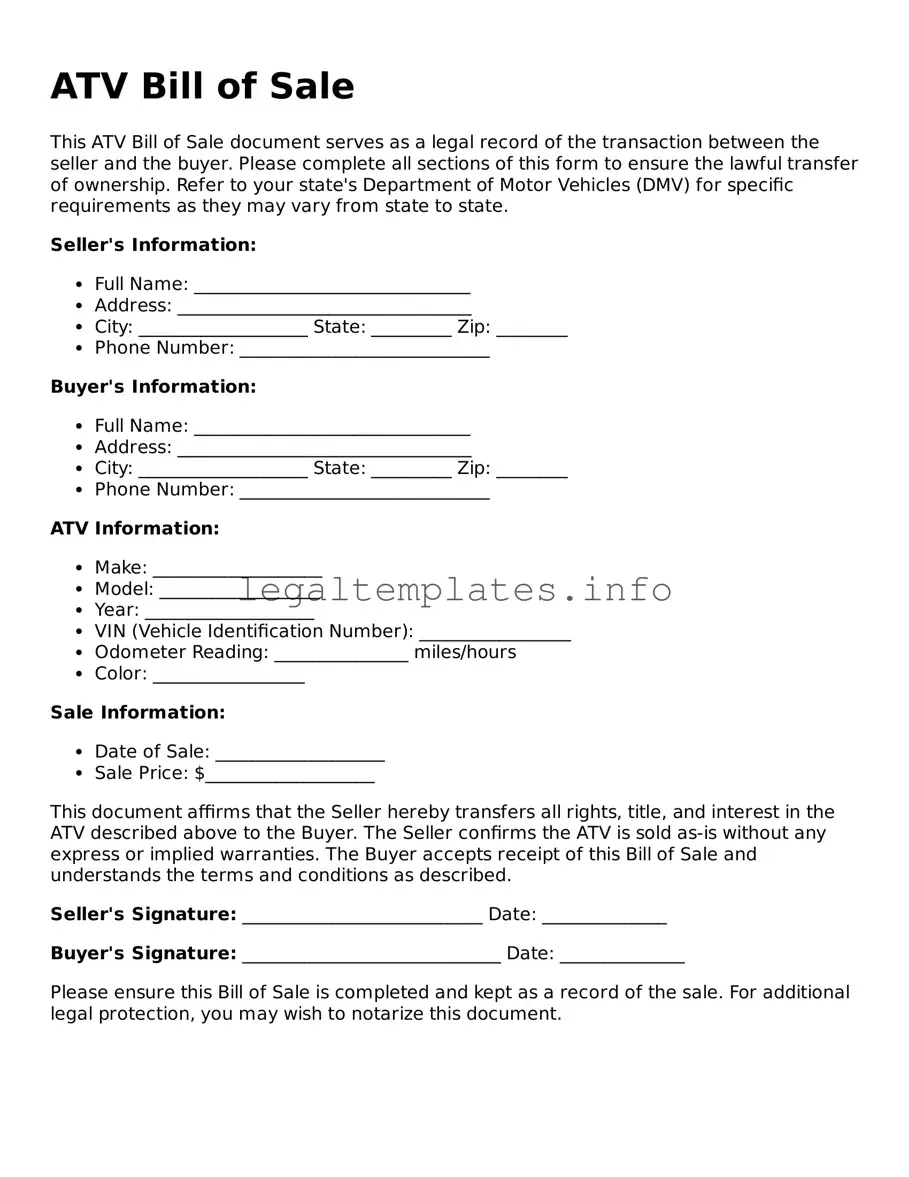What is an ATV Bill of Sale form?
An ATV Bill of Sale form is a document used to record the transaction details when buying or selling an All-Terrain Vehicle (ATV). It serves as proof of purchase and documents the change of ownership from the seller to the buyer. The form typically includes information such as the date of sale, purchase price, and descriptions of the ATV, alongside the names and signatures of both parties involved.
Why do I need an ATV Bill of Sale?
Having an ATV Bill of Sale is crucial for a few reasons. First, it legally documents the sale and purchase of the ATV, which helps protect both the buyer and the seller in case of disputes or claims. Second, it is often required by state law for the registration of the ATV under the new owner's name. Additionally, it serves as a record for personal accounting or tax purposes, ensuring that there's evidence of the financial transaction.
What information should be included in an ATV Bill of Sale?
A comprehensive ATV Bill of Sale should include the full names and contact information of both the seller and buyer, a detailed description of the ATV (including make, model, year, VIN), the sale price, the sale date, and stipulations regarding the condition of the ATV (such as "as is" or under warranty). It should also have a section for the signatures of both parties and, if applicable, a witness or notary public.
Do I need to notarize my ATV Bill of Sale?
Whether notarization is required can depend on the state where the sale is taking place. While not all states necessitate notarization, it is often recommended to have the ATV Bill of Sale notarized to add an extra layer of legal protection. Notarization confirms that the parties signing the document are who they claim to be and that they signed voluntarily, making the document more credible in legal situations.
Can I create an ATV Bill of Sale myself?
Yes, you can create an ATV Bill of Sale yourself as long as it contains all the necessary information regarding the transaction, the ATV, and the parties involved. There are templates available online to help you draft a Bill of Sale. However, ensure that the final document complies with the specific requirements of your state or locality to guarantee its validity.
What should I do after completing an ATV Bill of Sale?
After the ATV Bill of Sale is completed, both the buyer and the seller should keep a copy of the document for their records. The buyer will likely need the Bill of Sale for registration purposes. It's a good idea to check with the local Department of Motor Vehicles (DMV) or equivalent agency to understand any additional steps required for transferring the title and registering the ATV in the buyer's name. Ensuring all steps are followed promptly can help avoid legal or administrative issues down the line.
